| April 13 - April 17: Cardiovascular Physiology OBJECTIVES: Be able to describe blood flow through the cardiovascular system Be able to discuss the cardiac cycle Be able to draw and explain the cardiac conduction system Be able to draw and explain the EKG Be able to discuss cardiac function terms Be able to calculate cardiac output Be able to explain the cardiovascular response to exercise Click Here to Download Exam 3 Part B Let's start by watching this Youtube video that describes blood flow through the cardiovascular system and reviews the anatomy of the magnificent heart https://youtu.be/8oXbZcMU3Rk Below is a graphic the shows blood flow through the cardiovascular system. Please review and learn. |
||||||||
| Blood Flow Through the Pulmonary and Systemic Circuits of the Body | ||||||||
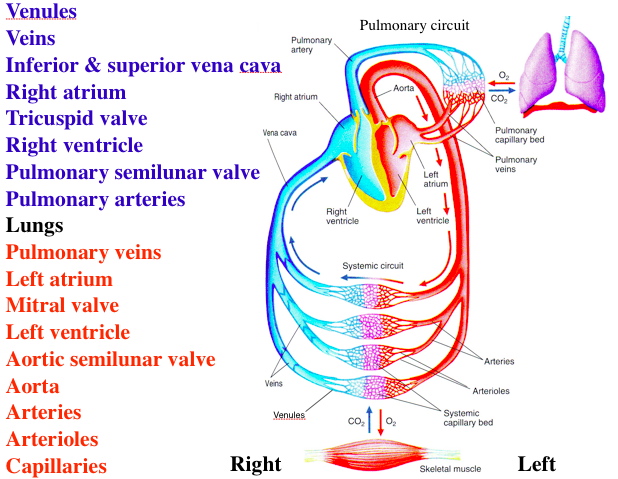 |
||||||||
|
|
||||||||
| Let's Now Explore the Cardiac Cycle of the Heart | ||||||||
| Class, please watch this Youtube video which explains and shows the cardiac cycle. | ||||||||
| https://youtu.be/19Prqlqmdbw Class, below is a summary slide of the cardiac cycle that we discussed and watched in the Youtube video. Please learn all of the phases of the Cardiac cycle IN DETAIL. Remember, the cardiac cycle is 'all events of ONE heart beat.' I want you to think of diastole as filling of the venticles and systole as ejection from the venctricles. |
||||||||
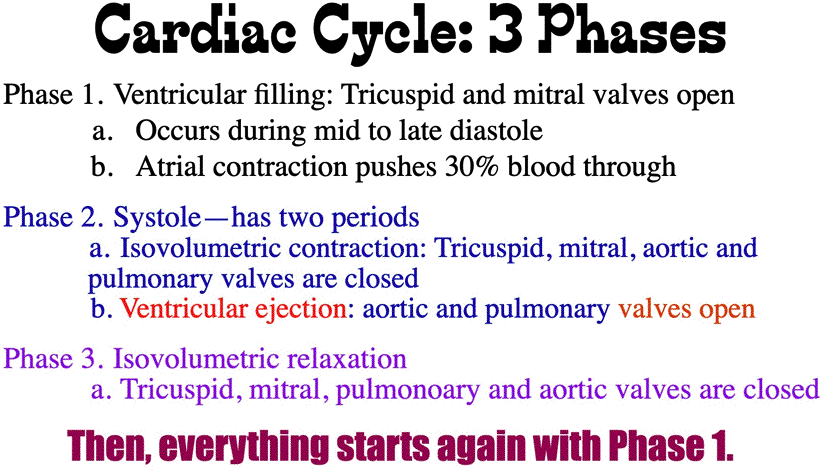 |
||||||||
|
|
||||||||
| Let's Now Explore the Cardiac Conduction System of the Heart | ||||||||
| Class, please watch this Youtube video which explains the cardiac conduction system. We also 'West Point' the cardiac conduction system in this Youtube video. |
||||||||
| https://youtu.be/TS24WB74xfE Class, below is a summary slide of cardiac conduction system we discussed in the Youtube video. Please make sure you can draw, identify and label this system. |
||||||||
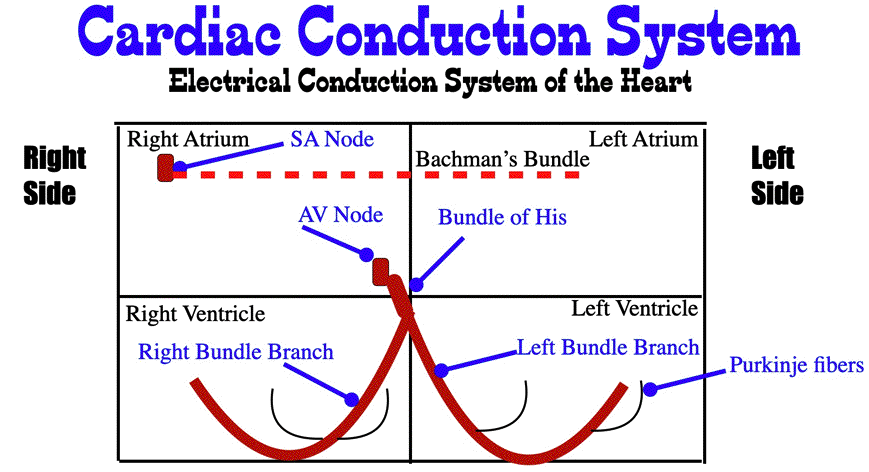 |
||||||||
| Let's Now Explore the EKG: An Electrical Depiction of the Cardiac Conduction System | ||||||||
| Class, please watch this Youtube video which explains the EKG. We also 'West Point' the EKG in this Youtube video. |
||||||||
| https://youtu.be/VsqEbAbC_NI |
||||||||
| Please learn how to draw, label and explain all of the events of an EKG tracing as shown in this illustration. |
||||||||
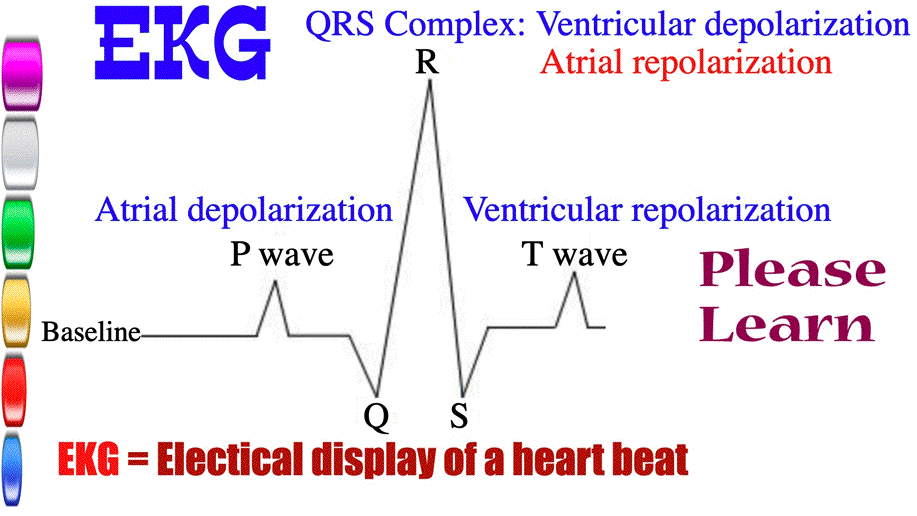 |
||||||||
| In this section Cardiac Function Terms and Sample Cardiac Output Calculations are Thoroughly discussed |
||||||||
| Class, please start by watching this Youtube video. It is a little longer because we discuss several terms of cardiac function (e.g., stroke volume, end-diastolic volume, exercise hyperemia, end-systolic volume and cardiac output), and we also breakdown (using the WEST Point technique) cardiac output calculations for ml/min and for L/m. PLEASE have your calculators ready to do the cardiac output calculations. | ||||||||
| https://youtu.be/JmO7l7WODEk | ||||||||
| Example Cardiac Output Calculation | ||||||||
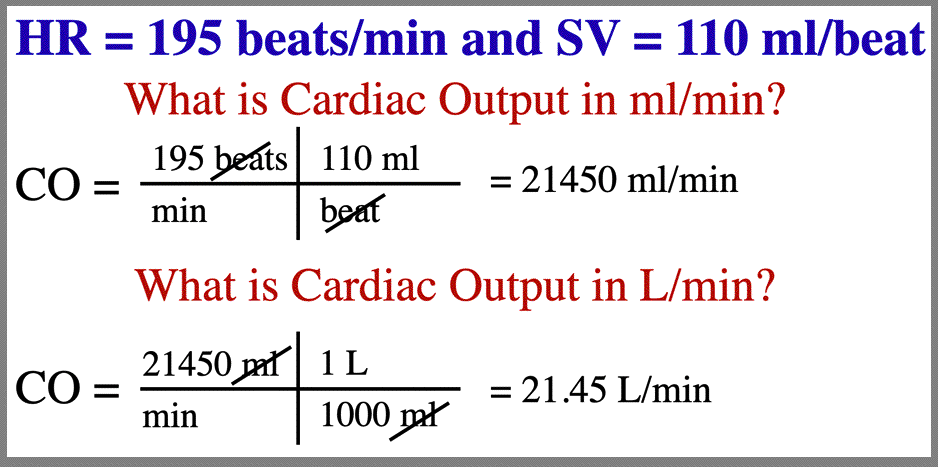 |
||||||||
| The Final Section of our Cardiovascular Physiology Unit Covers the Cardiovascular Response to Exercise. | ||||||||
| Please start by watching this Youtube video which discusses the intricate physiological responses of the cardiovascular system to increasing incremental exercise. We discuss heart rate before exercise, during exercise, the 4 factors of stroke volume, systolic and diastolic blood pressure, blood flow and arterial-venous oxygen difference. | ||||||||
| https://youtu.be/0w5-w3PrdjU | ||||||||
| Below is Graphic that Summarizes all of the Cardiovascular Responses we discuss. | ||||||||
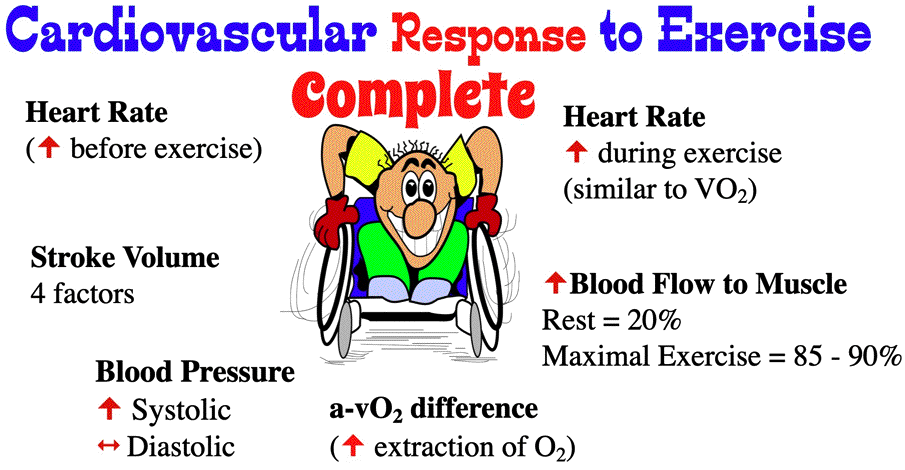 |
||||||||
| Interestingly, heart rate begins to increase before exercise due to sympathetic nervous system anticipation of exercise |
||||||||
| Heart rate during exercise increases similar to VO2 (However, VO2 is more closely related to the actual workout intensity. This is because heart rate fluctuates to hydration levels, stress levels, food intake and other factors.) |
||||||||
| Systolic blood pressure increases with exercise intensity. Diastolic pressure will stay stable or even go lower in healthy individuals (due to the vasodilation of the pulmonary and arotic arteries). |
||||||||
| a-vO2 difference shows enhanced extraction of oxygen at capilaries in muscle cells; this extraction of oxygen is needed to provide oxygen at the ETC. | ||||||||
| Blood flow to muscle is dramatically enhanced. Out body redirects blood flow with these precapillary spincter (round) muscles. This inhibits blood where it isn't needed and enhances blood to muscles that need the oxygen at the ETC. |
||||||||
| Below is a graphic that explains the 4 factors of Stroke Volume. | ||||||||
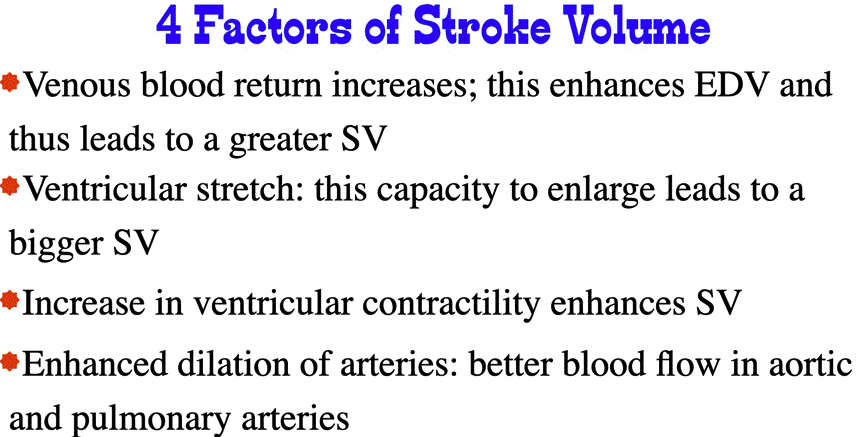 |
||||||||
| This Concludes our Cardiovascular Physiology Unit! |
||||||||
| Exam 3 Part B: Click here to get questions: Exam 3 Part B is due by midnight on April 17. No late papers accepted. |
||||||||
|